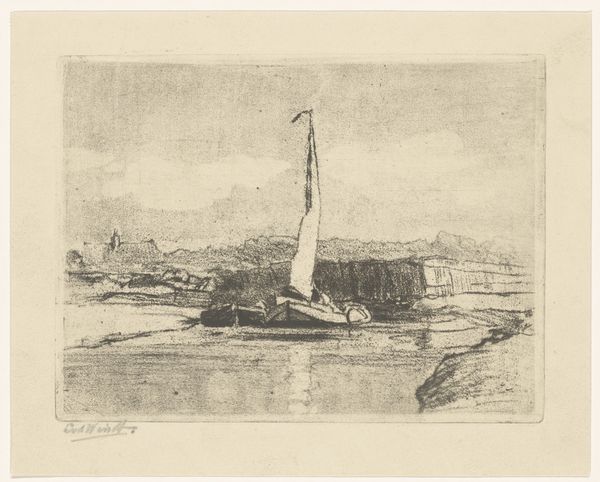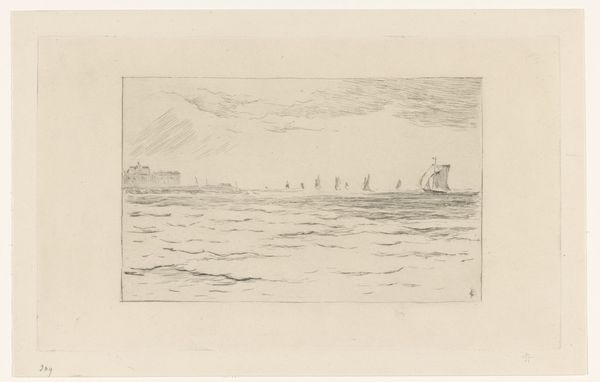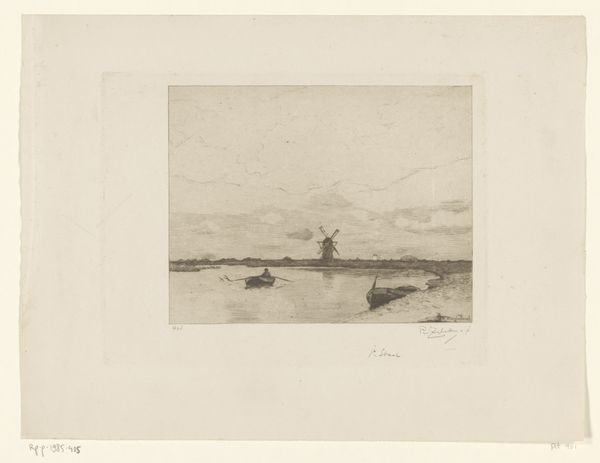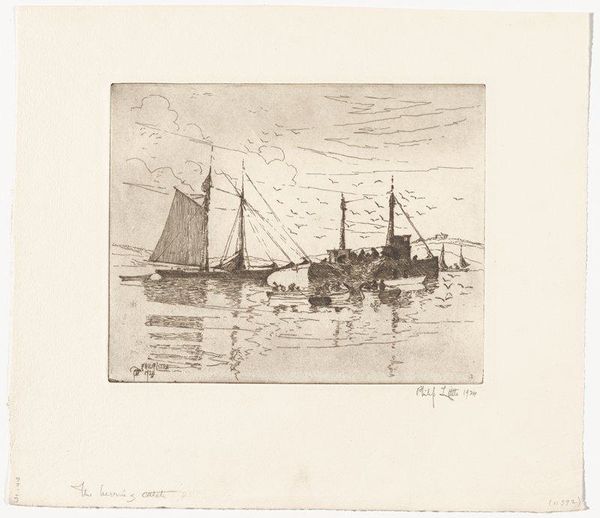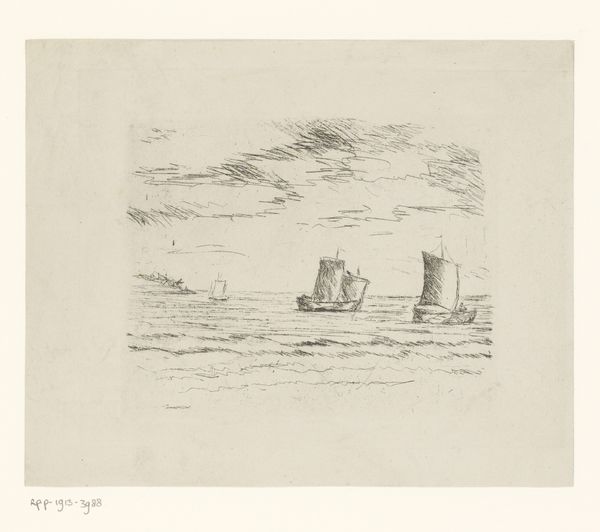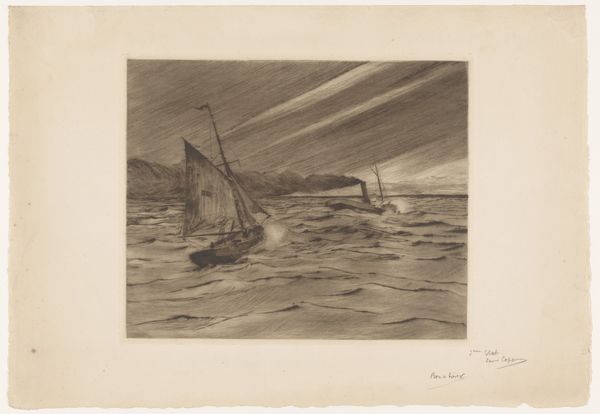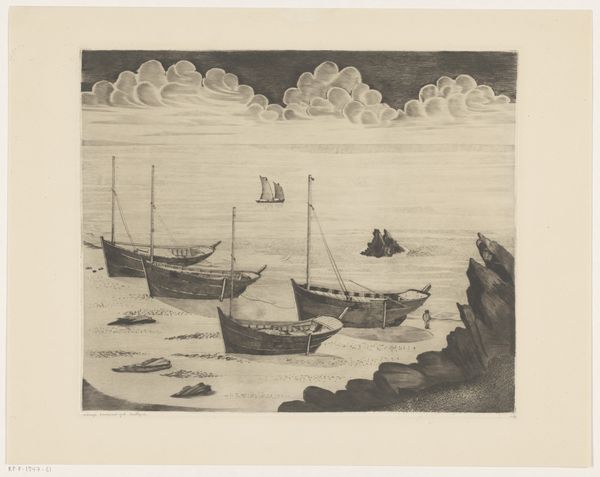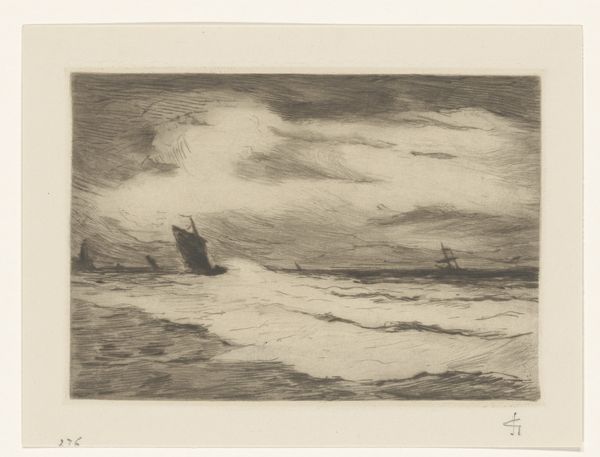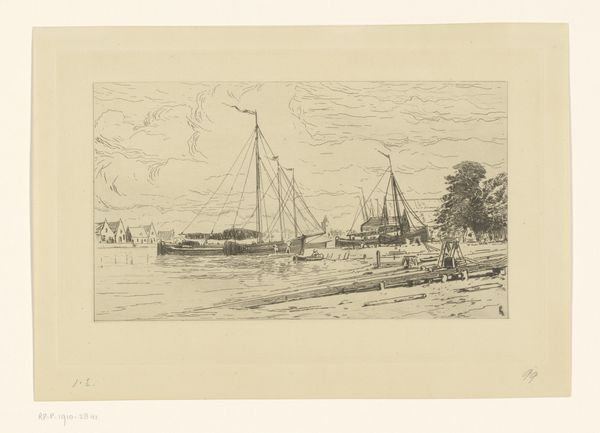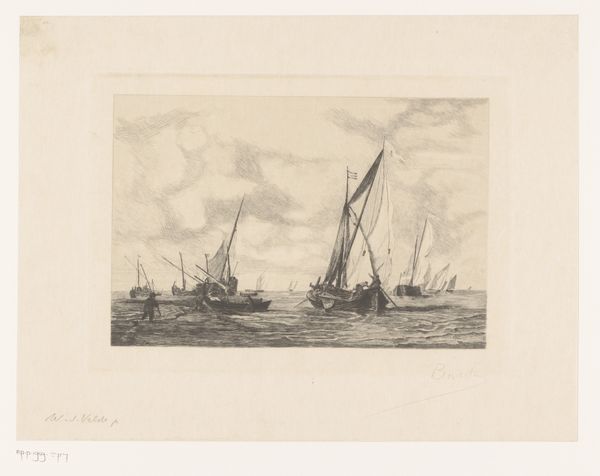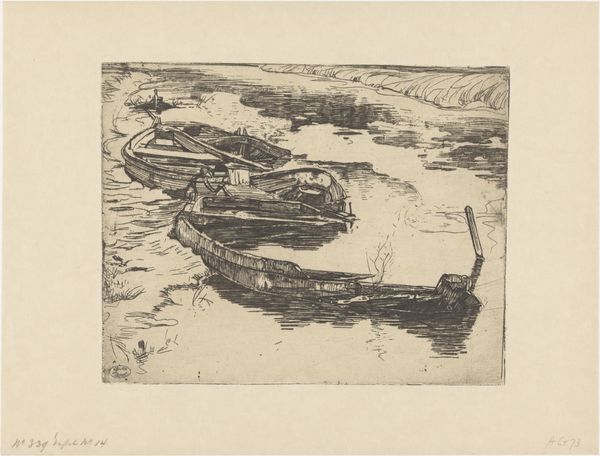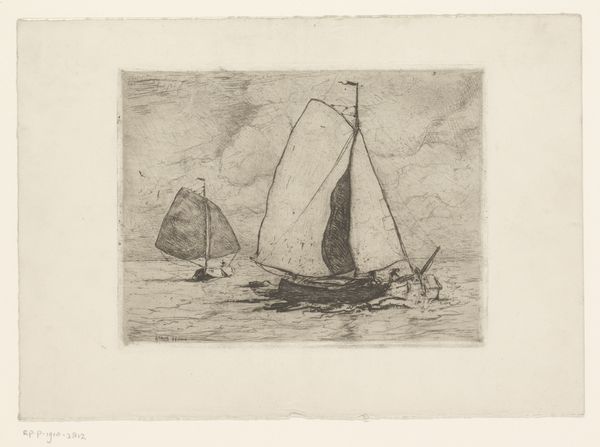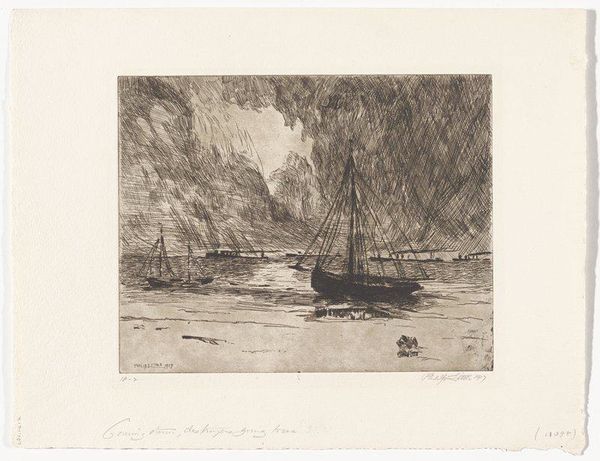
print, etching
# print
#
etching
#
landscape
#
realism
Dimensions: 9 15/16 x 12 in. (25.24 x 30.48 cm) (plate)13 7/8 x 17 1/2 in. (35.24 x 44.45 cm) (sheet)
Copyright: No Copyright - United States
Curator: Here we have "After the Southeaster," a 1924 etching by Philip Little, housed right here at the Minneapolis Institute of Art. It depicts a maritime scene after a storm. Editor: There's a stillness that belies the implied turbulence, isn’t there? The way the boats, even anchored or moving slowly, seem almost like resting creatures. It's a picture pregnant with quiet expectation. Curator: Absolutely. I find myself wondering, looking at this etching, what kind of southeaster Little had in mind? Knowing the kind of weather would shed light on why this particular moment was worthy of capturing it this way. Editor: Well, looking at it purely from a material standpoint, it’s fascinating how he used etching to convey this…this quiet. You know, etching has this direct, hands-on quality, so different from mass-produced images. Curator: That materiality really elevates the everyday scene, I think. These working boats are now framed with a light of grace, like a nod to both hard work, craft, and the sea. This, as opposed to, let's say, painting the portraits of captains alone. Editor: True. Printmaking in the early 20th century offered a fascinating middle ground: an aesthetic object made via accessible, reproducible means. It asks us: Who is this art *for*? Is it about romanticizing labor, or something else? And did he sell many copies or commissions, to common working folks, or rich elite? Curator: That tension between art for the elite versus art for the masses—I hadn’t considered it so clearly in this context! This image certainly presents a romantic, windswept vision, something the working class person at the shore knows all too well. In many respects, it’s timeless. But for someone experiencing "the southeaster," this picture could remind one what could await after turbulence subsides, not just about "romance of craft" in general. Editor: Precisely! Little’s piece is a great lesson in understanding how much our understanding of production—the socio-economics—can illuminate even the quietest of artworks. It is a landscape etched both on copper and class conflict, as well. Curator: Well said, the piece definitely brings to life many complex issues to examine with care! Thanks to your insight I feel like the picture got ever more clear than the surface showed, initially. Editor: Same here. Now, about where we can find some good clam chowder around here...?
Comments
No comments
Be the first to comment and join the conversation on the ultimate creative platform.
